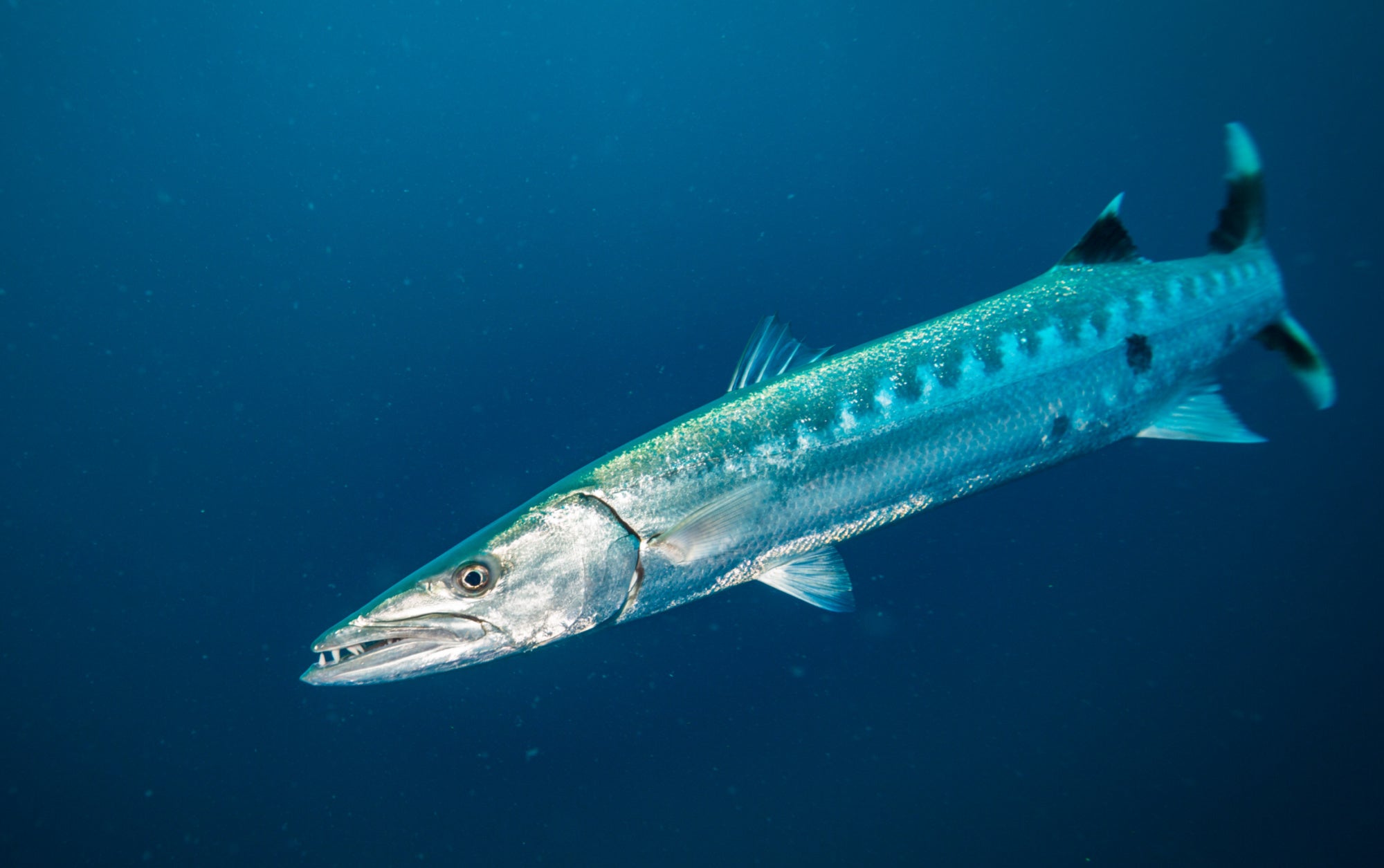A Connecticut Barracuda Brings Up Questions About “Exotic” Fish

“Exotic,” according to its Oxford Dictionary definition, means “originating in or characteristic of a distant foreign country.” Considering this, I always laugh about how commonly the word is thrown around in the fishing world. Every time someone catches a species in an area or body of water where it traditionally doesn’t belong, it’s labeled “exotic.” Meanwhile, true exotics like snakeheads and Asian carp are labeled “invasive,” which isn’t wrong, but they are also genuine exotics originating in other countries. Technically, a wayward tarpon caught far north of Florida isn’t exotic. Nor is a barracuda caught off the coast of New York. But one has still managed to make recent headlines as part of the ever-growing trend of “exotic” species popping up in the news.
The 19-pound barracuda caught by angler Jonathan Rogers is the first of its kind and the largest fish ever recorded in the Connecticut Department of Energy and Environmental Protection’s Exotic Marine record category. Just a few weeks prior, a tarpon caught in the Massachusetts’s surf also made rounds in the media. While not all these out-of-place catches make national news, if you’re plugged into the fishing world, you hear about them often, especially on social media. This begs the question of whether climate change is sending more “exotics” to places where they shouldn’t be, or if we simply hear about them faster thanks to the speed at which information travels. I think the answer lies somewhere in the middle.
Old Haunts
There is a place in southern New Jersey—my home state—called Tarpon Cove within Delaware Bay. The tidal creek leading into it is called Tarpon Gut. Jog a few hours north to Brooklyn, New York, and you’ll find Sheepshead Bay along the southern shore of Long Island. Neither of these locations were named randomly. At some point in history, tarpon cruised in and out of Tarpon Gut, and Sheepshead Bay was rife with sheepshead. Both species, however, are now and have been considered southern fish for many decades. It’s only been within the last 20 years or so that sheepshead have come back on the radar of New Jersey and southern New York anglers. And I’m not talking about occasional sightings—they exist in numbers strong enough to be fully targetable, yet most people still consider them “exotic.” Fingers are quickly pointed at rising temperatures bringing these fish back, though nobody can say for certain that’s the sole reason.
More telling is the historic northern population of red drum, also known as redfish. From the early 1900s through the early 1950s, you’d be hard pressed to find written accounts of catching striped bass in the surf between central New Jersey and Delaware. During those years, these were strong states for redfish, with Delaware Bay serving has a prime breeding ground for what locals called “channel bass” back then. Then, they seemingly vanished within that range, and, over time, their old haunts became prime striper territory. Why? Were we experiencing global cooling, as striped bass prefer much cooler water than reds? More likely it’s because commercial fishing and traffic on their breeding grounds, coupled with pollution, killed off the vital eel grass redfish require to thrive and breed. Over the last few years, however, more and more reds—large ones, too—are being caught in this historic zone. Is it because water temperatures are rising or because something missing that the redfish needed has returned?
Southern Charm
To be very clear, I firmly believe in global warming and climate change. It is, to me, undeniable, but I’m also fascinated with the short- and long-term cyclical nature of fisheries. Is warming water attracting more southern species like kingfish to places like Cape Cod? Absolutely. But anglers seem to look at these catches as something recent and novel when that’s really not the case. We just hear about more of them these days.
From first grade through my senior year of high school, I spent every weekend on my family boat at the Jersey Shore. Without fail, something “exotic” would hit the dock every year between August and October. The ocean was always at its warmest during this time, and a shifting Gulf Stream had the potential to hurl all kinds of abnormal visitors to the area. We’d spot angelfish cruising around the dock pilings. I can recall popping into the local tackle shop to see Polaroid photos of a tarpon landed on nearby Brigantine Beach, and this would have been the early 1990s. One day while chasing snapper bluefish, I wound up with a juvenile barracuda on my line. Had this happened during the social media age, that little barracuda might have spread through the Northeast fishing community like wildfire. But back in those days, news of a New Jersey tarpon only traveled within the local fishing scene, and, to the best of my recollection, it never even made the local paper.
Read Next: Florida Has Become the Budget-Friendly Amazon for Anglers
There is no doubt that as the climate continues to change, we’re going to continue to see fish move around and populate areas where they hadn’t been before, but in some cases that does not spell doom and gloom. It can point to a resurgence of a forage species, cleaner water, or—as with those sheepshead and redfish—a cyclical shift that can be seen by looking back in time. At some point those “exotics” won’t be exotic anymore, and life’s too short not to embrace new fishing challenges.
The post A Connecticut Barracuda Brings Up Questions About “Exotic” Fish appeared first on Outdoor Life.
Articles may contain affiliate links which enable us to share in the revenue of any purchases made.
Source: https://www.outdoorlife.com/fishing/exotic-fish-definition/




